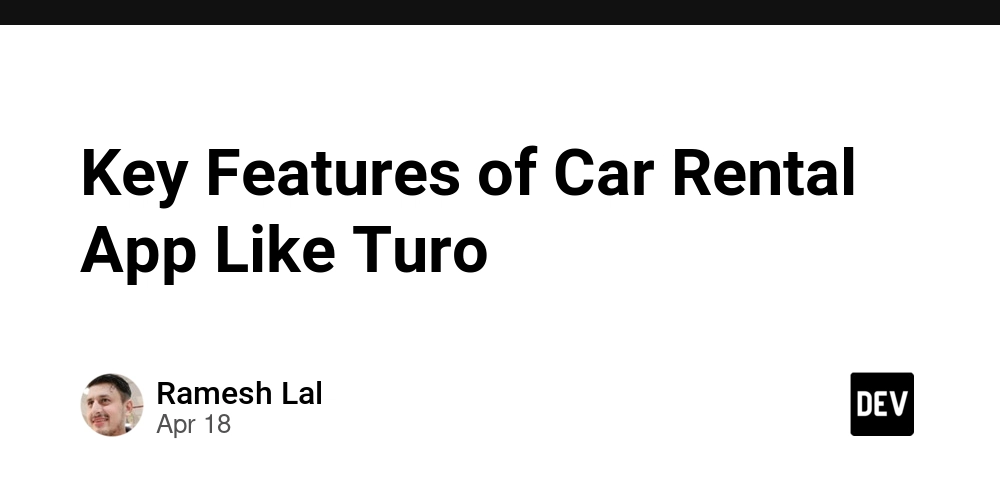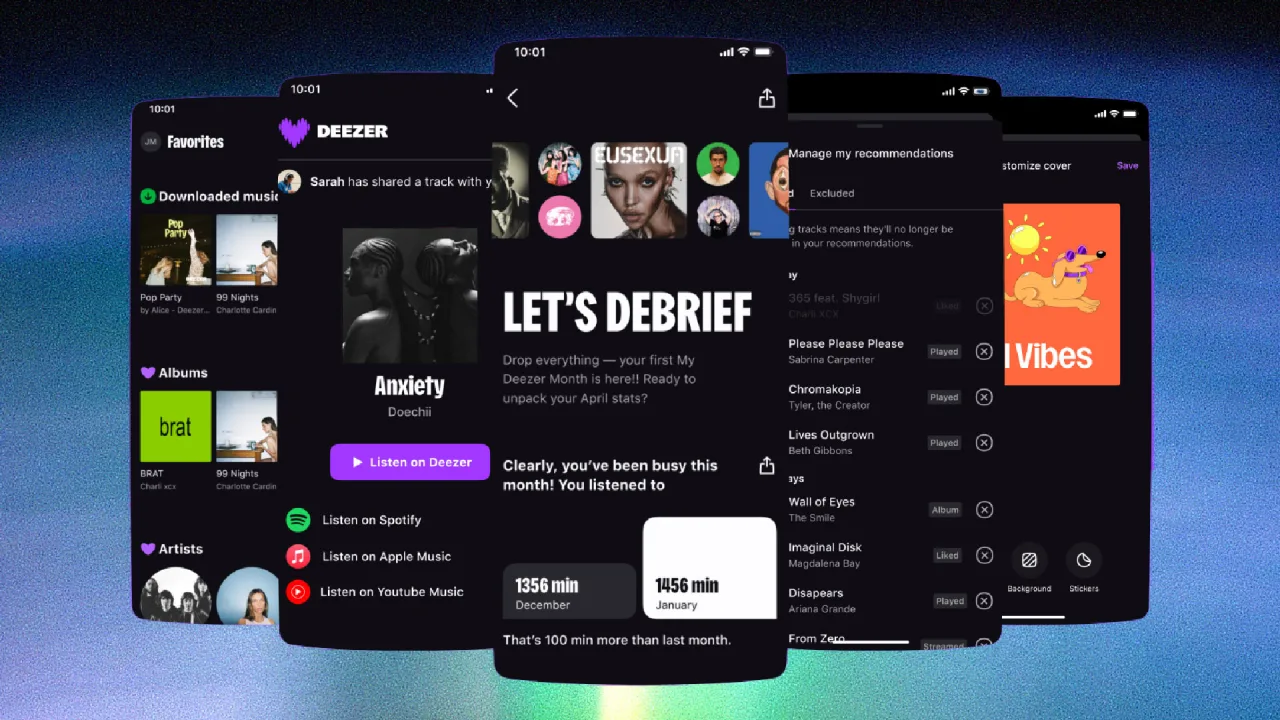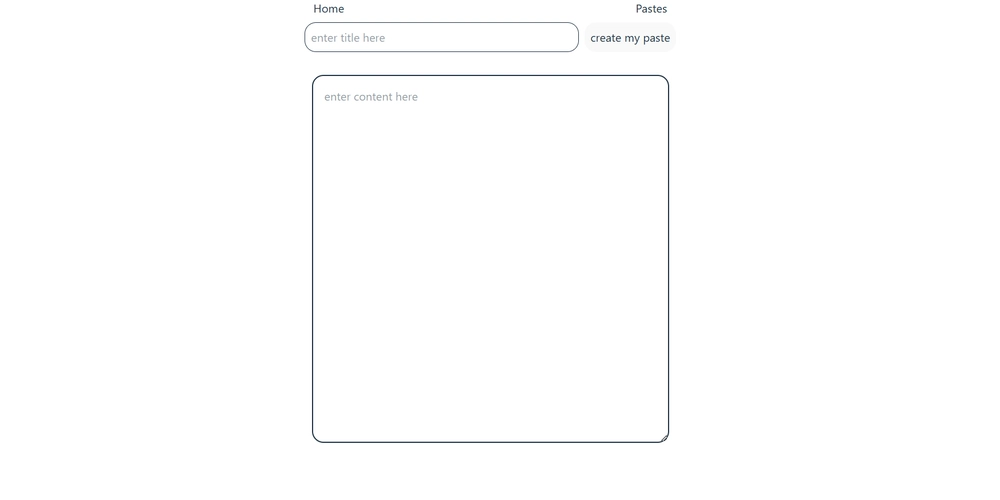Key Features of Car Rental App Like Turo
In recent years, the transportation industry has undergone a significant transformation, fueled by the rise of the sharing economy. Apps like Turo, Getaround, and HyreCar have revolutionized how people rent cars by enabling peer-to-peer (P2P) car sharing. These platforms offer more flexibility and affordability than traditional rental companies while empowering vehicle owners to earn passive income. If you're planning to develop a car rental app like Turo or are just curious about what makes these platforms successful, understanding their core features is essential. This article explores the key features of a car rental app like Turo, from user experience to backend functionality, covering what it takes to build a robust, scalable, and user-friendly platform. 1. User Registration and Authentication The first interaction a user has with your app is through the sign-up and login process. A seamless onboarding experience sets the tone for the rest of the app journey. Key elements: Email and password login Social media sign-up/integration (Google, Apple, Facebook) Two-factor authentication for added security Driver's license verification (via photo upload or real-time ID scan) Turo, for instance, ensures that users go through a background check and identity verification before they can rent or list a car. 2. User Profiles (Owner and Renter) Since the app serves both car owners and renters, it’s crucial to provide tailored profile views based on user roles. Renter Features: View past and upcoming rentals Save favorite vehicles Leave reviews Access trip history and receipts Owner Features: List and manage multiple vehicles Set availability, pricing, and rules Monitor booking requests View earnings and analytics Well-designed profiles build trust and transparency, which are vital in a P2P platform. 3. Advanced Car Listings Vehicle listings are the heart of any car-sharing app. Each listing must contain comprehensive, well-organized details to attract potential renters. Must-have listing details: Vehicle make, model, year, and trim High-resolution photos (inside and outside) Features (GPS, Bluetooth, Sunroof, etc.) Fuel type and mileage limits Location of the vehicle Availability calendar Pricing (daily, weekly, monthly rates) Some platforms also allow owners to add custom rules, such as no smoking or no pets. 4. Search and Filter Options With hundreds or even thousands of listings, a powerful search engine is crucial to help users find the perfect vehicle. Filters to include: Pickup location (with map integration) Date and time range Vehicle type (SUV, sedan, truck, etc.) Price range Transmission type Instant booking availability Features and amenities Ratings and reviews An intuitive and fast search interface boosts user satisfaction and conversion rates. 5. Real-Time Booking System A seamless booking experience makes your app convenient and easy to use. Booking flow: Select dates and location Browse and filter vehicles Choose a car and view details Send booking request or use instant book Make payment Get confirmation and pick-up instructions Make sure to support calendar sync, so owners can block out dates when the vehicle is unavailable. 6. Pricing and Payment Integration A transparent and secure payment process is critical in maintaining trust and ensuring platform profitability. Features to include: Multiple payment options (credit/debit cards, PayPal, Apple Pay) Secure payment gateway (Stripe, Braintree) Dynamic pricing (based on season, location, demand) Commission system for platform earnings Refund and cancellation policies For owners, include a payout dashboard that shows: Earnings per trip Total monthly income Deductions and commissions Upcoming payments 7. Ratings and Reviews Trust is a cornerstone of the sharing economy. Ratings and reviews give both parties confidence in each other’s reliability. Review system: Renter rates the vehicle and owner Owner rates the renter Comments section for detailed feedback Verified reviews only after completed trips Having a reputation system encourages good behavior and helps weed out problematic users. 8. In-App Messaging System Clear communication is key in coordinating pickups, returns, and special requests. An in-app chat ensures that both parties stay informed while keeping their contact info private. Features: Real-time messaging Push notifications for new messages Ability to share images (e.g., damage photos) Auto-replies or templates for frequent questions This feature becomes even more important when coordinating contactless car handoffs, a growing trend in the post-COVID world. 9. Geolocation and Navigation Location-based features power almost every function in a car rental app—from listing discovery to pick-up and return. Key functionalities: Real-time

In recent years, the transportation industry has undergone a significant transformation, fueled by the rise of the sharing economy. Apps like Turo, Getaround, and HyreCar have revolutionized how people rent cars by enabling peer-to-peer (P2P) car sharing. These platforms offer more flexibility and affordability than traditional rental companies while empowering vehicle owners to earn passive income.
If you're planning to develop a car rental app like Turo or are just curious about what makes these platforms successful, understanding their core features is essential. This article explores the key features of a car rental app like Turo, from user experience to backend functionality, covering what it takes to build a robust, scalable, and user-friendly platform.
1. User Registration and Authentication
The first interaction a user has with your app is through the sign-up and login process. A seamless onboarding experience sets the tone for the rest of the app journey.
Key elements:
Email and password login
Social media sign-up/integration (Google, Apple, Facebook)
Two-factor authentication for added security
Driver's license verification (via photo upload or real-time ID scan)
Turo, for instance, ensures that users go through a background check and identity verification before they can rent or list a car.
2. User Profiles (Owner and Renter)
Since the app serves both car owners and renters, it’s crucial to provide tailored profile views based on user roles.
Renter Features:
View past and upcoming rentals
Save favorite vehicles
Leave reviews
Access trip history and receipts
Owner Features:
List and manage multiple vehicles
Set availability, pricing, and rules
Monitor booking requests
View earnings and analytics
Well-designed profiles build trust and transparency, which are vital in a P2P platform.
3. Advanced Car Listings
Vehicle listings are the heart of any car-sharing app. Each listing must contain comprehensive, well-organized details to attract potential renters.
Must-have listing details:
Vehicle make, model, year, and trim
High-resolution photos (inside and outside)
Features (GPS, Bluetooth, Sunroof, etc.)
Fuel type and mileage limits
Location of the vehicle
Availability calendar
Pricing (daily, weekly, monthly rates)
Some platforms also allow owners to add custom rules, such as no smoking or no pets.
4. Search and Filter Options
With hundreds or even thousands of listings, a powerful search engine is crucial to help users find the perfect vehicle.
Filters to include:
Pickup location (with map integration)
Date and time range
Vehicle type (SUV, sedan, truck, etc.)
Price range
Transmission type
Instant booking availability
Features and amenities
Ratings and reviews
An intuitive and fast search interface boosts user satisfaction and conversion rates.
5. Real-Time Booking System
A seamless booking experience makes your app convenient and easy to use.
Booking flow:
Select dates and location
Browse and filter vehicles
Choose a car and view details
Send booking request or use instant book
Make payment
Get confirmation and pick-up instructions
Make sure to support calendar sync, so owners can block out dates when the vehicle is unavailable.
6. Pricing and Payment Integration
A transparent and secure payment process is critical in maintaining trust and ensuring platform profitability.
Features to include:
Multiple payment options (credit/debit cards, PayPal, Apple Pay)
Secure payment gateway (Stripe, Braintree)
Dynamic pricing (based on season, location, demand)
Commission system for platform earnings
Refund and cancellation policies
For owners, include a payout dashboard that shows:
Earnings per trip
Total monthly income
Deductions and commissions
Upcoming payments
7. Ratings and Reviews
Trust is a cornerstone of the sharing economy. Ratings and reviews give both parties confidence in each other’s reliability.
Review system:
Renter rates the vehicle and owner
Owner rates the renter
Comments section for detailed feedback
Verified reviews only after completed trips
Having a reputation system encourages good behavior and helps weed out problematic users.
8. In-App Messaging System
Clear communication is key in coordinating pickups, returns, and special requests. An in-app chat ensures that both parties stay informed while keeping their contact info private.
Features:
Real-time messaging
Push notifications for new messages
Ability to share images (e.g., damage photos)
Auto-replies or templates for frequent questions
This feature becomes even more important when coordinating contactless car handoffs, a growing trend in the post-COVID world.
9. Geolocation and Navigation
Location-based features power almost every function in a car rental app—from listing discovery to pick-up and return.
Key functionalities:
Real-time location tracking of available cars
Map view for listings
Navigation to pick-up/drop-off points
Geofencing for trip boundaries
Location history for safety and analytics
You can also integrate with services like Google Maps or Mapbox for accurate routing.
10. Trip Management and History
A complete trip dashboard provides users with all the necessary information before, during, and after a rental.
For Renters:
Trip countdown and itinerary
Pick-up and drop-off instructions
Roadside assistance options
Trip extension or cancellation
For Owners:
Upcoming bookings and past trips
Vehicle condition checklist
Mileage and usage tracking
Both parties should receive reminders and alerts throughout the trip lifecycle.
11. Insurance Integration
Insurance is a make-or-break aspect of peer-to-peer rentals. Platforms like Turo partner with insurers to offer flexible plans for owners and renters.
Options to include:
Tiered protection plans (basic to premium)
Liability coverage
Theft and damage protection
24/7 roadside assistance
You can integrate with third-party insurance APIs or offer your own custom packages.
12. Admin Dashboard and Analytics
The platform’s backend is where admins control and monitor everything—users, listings, disputes, and earnings.
Key features:
User management (ban/suspend users)
Vehicle listing approvals
Dispute resolution tools
Reporting dashboard
Commission tracking
Promotion and discount management
The admin panel should be secure, intuitive, and scalable for growth.
13. Push Notifications and Alerts
Notifications keep users informed and engaged, from booking confirmations to promotional messages.
Common notifications:
Trip reminders
Payment receipts
Review requests
Owner response alerts
Maintenance or vehicle recalls
Ensure that users can customize their notification preferences.
14. Loyalty and Referral Programs
Encourage retention and word-of-mouth marketing through smart loyalty features.
Popular programs:
Referral bonuses for inviting friends
Credits for completing multiple trips
Tiered memberships with perks
Coupons and discount codes
Gamification elements can also add fun and reward to the user experience.
15. Security and Compliance
Because P2P rentals involve personal identity, vehicles, and payments, your app must comply with regulations and follow best security practices.
Key components:
GDPR and CCPA compliance
Data encryption (in-transit and at-rest)
Regular vulnerability testing
Secure cloud storage (AWS, Azure)
Fraud detection and user verification
Security builds long-term trust and protects both the platform and its users.
Final Thoughts
Creating a car rental app like Turo is a rewarding but complex process. It requires a deep understanding of user behavior, logistics, and technology. The features outlined in this article are not just optional add-ons—they are the backbone of a seamless, trustworthy, and scalable peer-to-peer car sharing platform.
If you're planning to build a Turo-like app, focus on delivering an outstanding user experience backed by secure, scalable infrastructure. With the right blend of design, development, and strategy, you could be driving your way into one of the most exciting sectors of the mobility revolution.


.jpg)

























![[Webinar] AI Is Already Inside Your SaaS Stack — Learn How to Prevent the Next Silent Breach](https://blogger.googleusercontent.com/img/b/R29vZ2xl/AVvXsEiOWn65wd33dg2uO99NrtKbpYLfcepwOLidQDMls0HXKlA91k6HURluRA4WXgJRAZldEe1VReMQZyyYt1PgnoAn5JPpILsWlXIzmrBSs_TBoyPwO7hZrWouBg2-O3mdeoeSGY-l9_bsZB7vbpKjTSvG93zNytjxgTaMPqo9iq9Z5pGa05CJOs9uXpwHFT4/s1600/ai-cyber.jpg?#)












































































































































![[The AI Show Episode 144]: ChatGPT’s New Memory, Shopify CEO’s Leaked “AI First” Memo, Google Cloud Next Releases, o3 and o4-mini Coming Soon & Llama 4’s Rocky Launch](https://www.marketingaiinstitute.com/hubfs/ep%20144%20cover.png)






































































































































































































![Rogue Company Elite tier list of best characters [April 2025]](https://media.pocketgamer.com/artwork/na-33136-1657102075/rogue-company-ios-android-tier-cover.jpg?#)







































































_Andreas_Prott_Alamy.jpg?width=1280&auto=webp&quality=80&disable=upscale#)






























































































![What’s new in Android’s April 2025 Google System Updates [U: 4/18]](https://i0.wp.com/9to5google.com/wp-content/uploads/sites/4/2025/01/google-play-services-3.jpg?resize=1200%2C628&quality=82&strip=all&ssl=1)










![Apple Watch Series 10 Back On Sale for $299! [Lowest Price Ever]](https://www.iclarified.com/images/news/96657/96657/96657-640.jpg)
![EU Postpones Apple App Store Fines Amid Tariff Negotiations [Report]](https://www.iclarified.com/images/news/97068/97068/97068-640.jpg)
![Apple Slips to Fifth in China's Smartphone Market with 9% Decline [Report]](https://www.iclarified.com/images/news/97065/97065/97065-640.jpg)































































































































